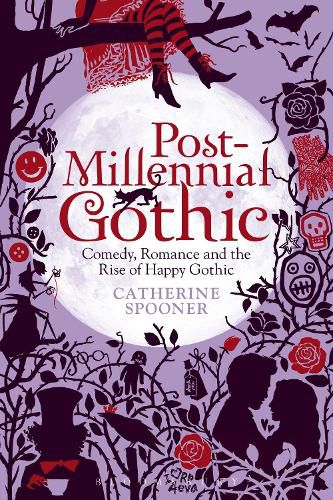Readings Newsletter
Become a Readings Member to make your shopping experience even easier.
Sign in or sign up for free!
You’re not far away from qualifying for FREE standard shipping within Australia
You’ve qualified for FREE standard shipping within Australia
The cart is loading…






Surveying the widespread appropriations of the Gothic in contemporary literature and culture, Post-Millennial Gothic shows contemporary Gothic is often romantic, funny and celebratory. Reading a wide range of popular texts, from Stephenie Meyer’s Twilight series through Tim Burton’s Gothic film adaptations of Sweeney Todd, Alice in Wonderland and Dark Shadows, to the appearance of Gothic in fashion, advertising and television, Catherine Spooner argues that conventional academic and media accounts of Gothic culture have overlooked this celebratory strain of ‘Happy Gothic’.
Identifying a shift in subcultural sensibilities following media coverage of the Columbine shootings, Spooner suggests that changing perceptions of Goth subculture have shaped the development of 21st-century Gothic. Reading these contemporary trends back into their sources, Spooner also explores how they serve to highlight previously neglected strands of comedy and romance in earlier Gothic literature.
$9.00 standard shipping within Australia
FREE standard shipping within Australia for orders over $100.00
Express & International shipping calculated at checkout
Surveying the widespread appropriations of the Gothic in contemporary literature and culture, Post-Millennial Gothic shows contemporary Gothic is often romantic, funny and celebratory. Reading a wide range of popular texts, from Stephenie Meyer’s Twilight series through Tim Burton’s Gothic film adaptations of Sweeney Todd, Alice in Wonderland and Dark Shadows, to the appearance of Gothic in fashion, advertising and television, Catherine Spooner argues that conventional academic and media accounts of Gothic culture have overlooked this celebratory strain of ‘Happy Gothic’.
Identifying a shift in subcultural sensibilities following media coverage of the Columbine shootings, Spooner suggests that changing perceptions of Goth subculture have shaped the development of 21st-century Gothic. Reading these contemporary trends back into their sources, Spooner also explores how they serve to highlight previously neglected strands of comedy and romance in earlier Gothic literature.